Southwest Michigan field crop update – July 23, 2020
Recent scattered showers helped keep crops moving forward during critical growth stages, but the hot and dry weather in the forecast is not a welcome sight.

Weather
Rainfall in southern Michigan this past week was again highly variable with locations in south central receiving 1.1 inches on average (0.55 to 1.77 inches) and those in the southwest receiving 0.6 inch (0.18 to 1.06 inches) as measured at Michigan State University Enviroweather stations in the region. Temperatures were slightly above normal, and that is not expected to change for the rest of July and likely August.
The forecast for the coming week includes a hot and humid weekend with temperatures next week moderating to near-normal, resulting in weekly evapotranspiration rates typical for this time of year. The next chance of rain will be Sunday evening, July 26, into Monday. The rest of next week is likely to be dry, even if Tropical Storm Hannah does make its way inland from the Gulf. We are not expected to receive more than 0.5 inch of rain in the coming week, so it will be important to scout for pests that thrive in hot and dry conditions (see below).
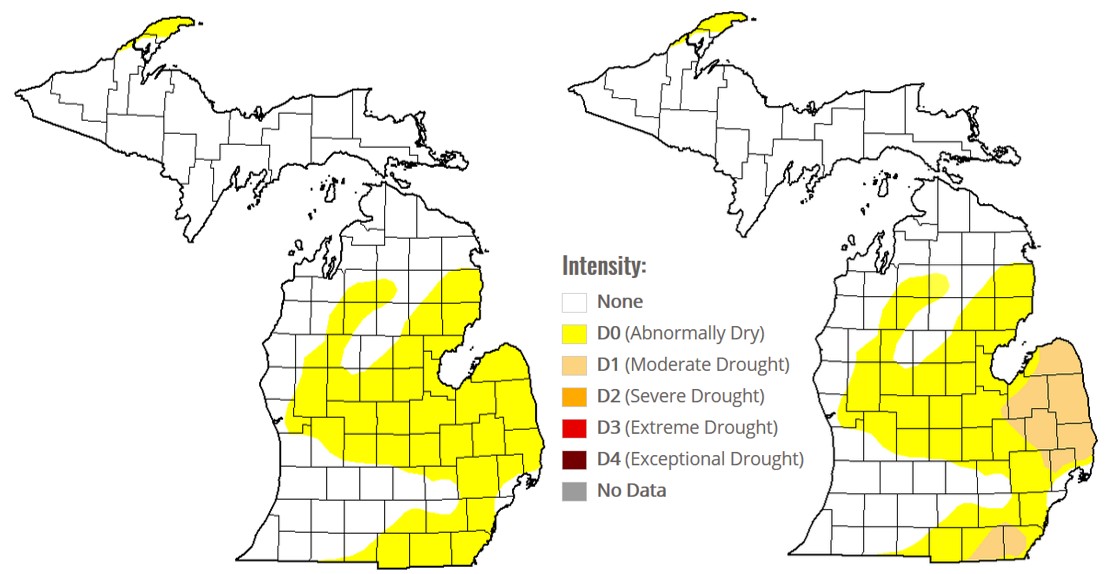
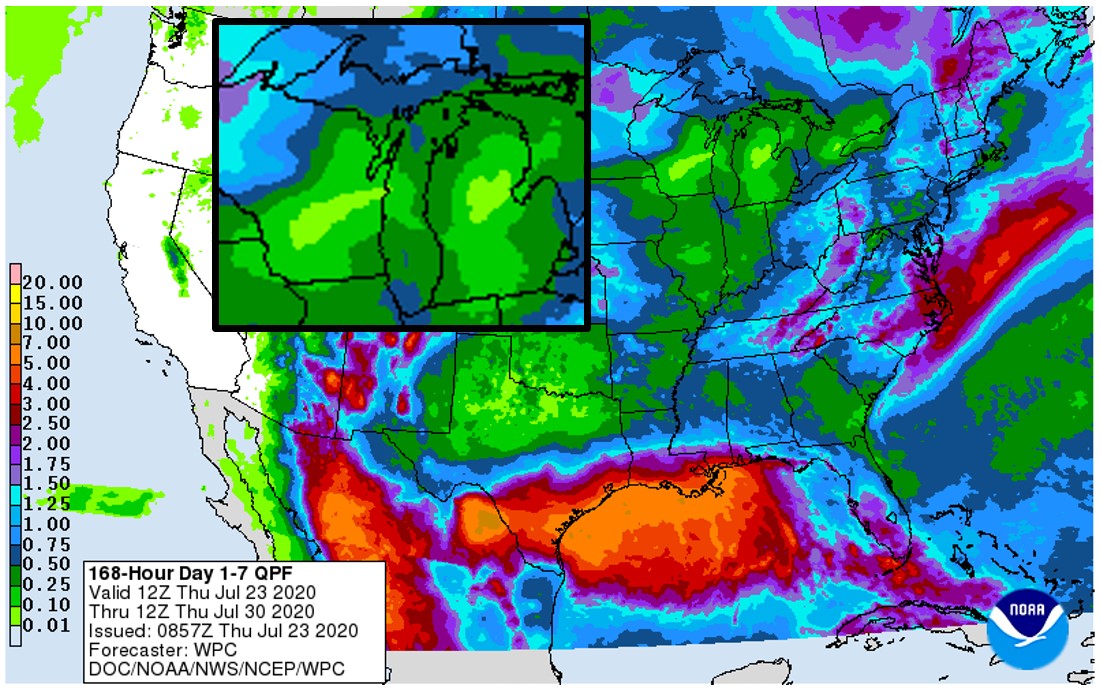
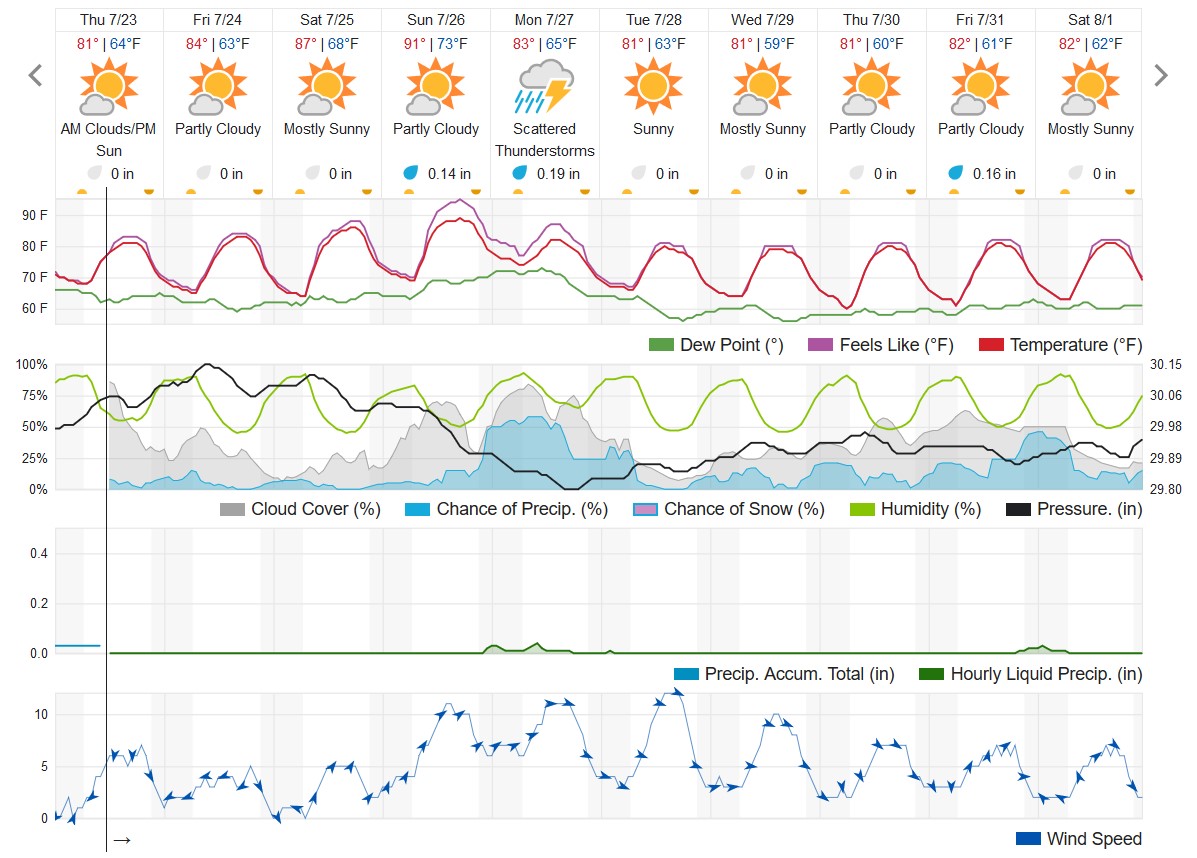
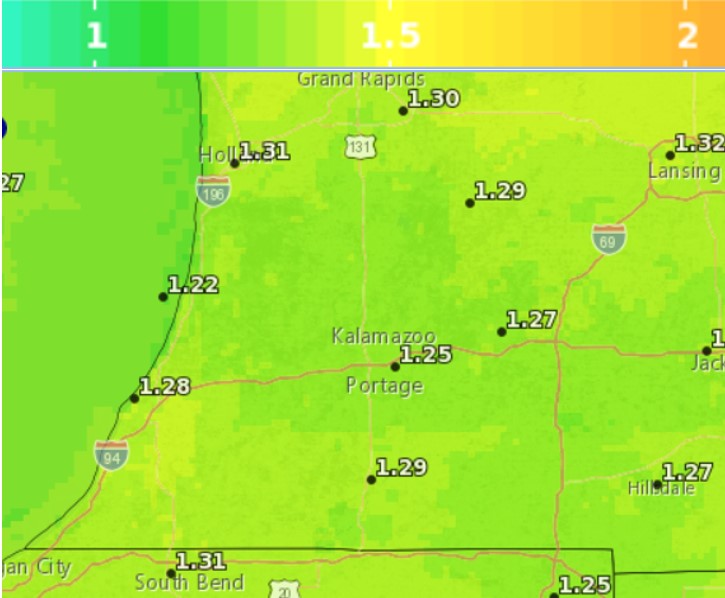
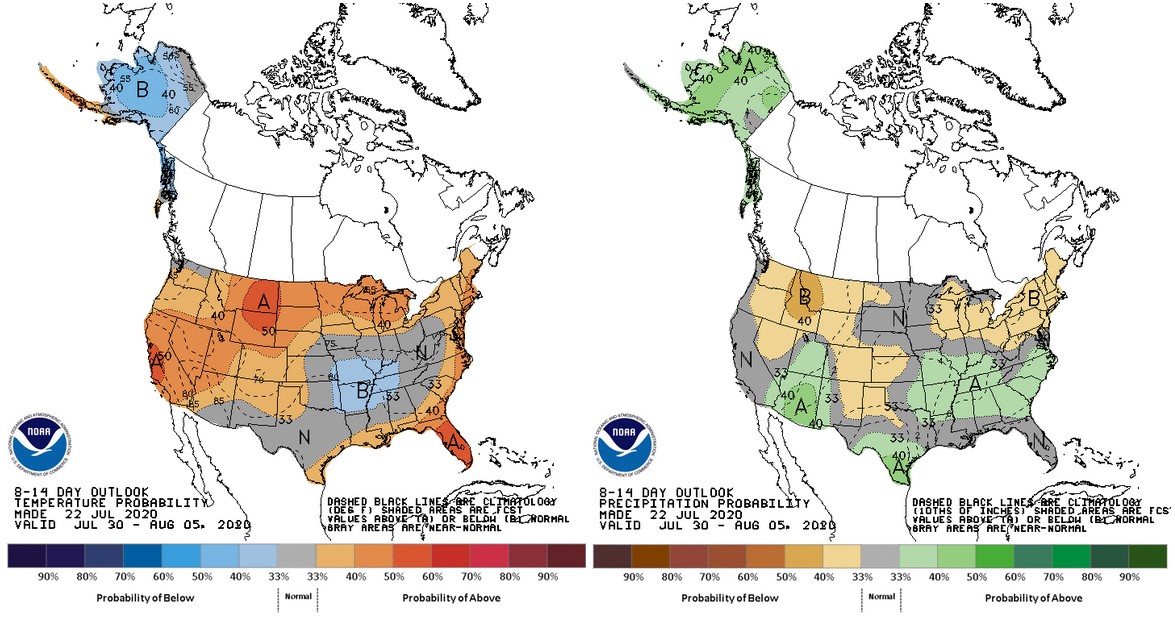
While rainfall brought relief to drought conditions across some portions of the region, much of the area remained dry despite heavy rainfall in the forecast. This has implications for plant growth but perhaps more importantly, it will impact the potential for insects.
Sap feeding insects
During the previous weeks, we began to see higher incidences of potato leafhoppers in alfalfa and even some in soybeans, and spider mites in dry, dusty corners of soybean fields. Spider mite damage so far has not led to leaf defoliation, but there are definite pockets of yellowing and some bronzing in the field edges. Leafhopper damage to soybeans is pretty unusual, but in higher numbers you can sometimes see yellowing along leaf edges.
Dry conditions help to keep pathogenic fungi—that often control mite, leafhopper and aphid populations under control—from becoming effective in the plant canopy. If dry conditions continue, it will be important to monitor for these pests for the rest of summer. If you are seeing infestations of spider mites along field edges, you may want to consider spraying a couple of passes along these field borders to see if you can reduce costs of pesticides and to preserve beneficials in the fields to prevent subsequent re-infestations.
Grasshoppers
We are seeing well above normal levels of grasshoppers showing up in fields and field edges. This may also be associated with dryer conditions this season. They, too, are somewhat controlled by pathogenic fungi infections. There are lots of small and half-grown grasshoppers out in fields, so their numbers bear watching.
Grasshopper damage appears as larger holes in corn and soybean leaves. In corn, grasshoppers may also feed on silks and ear tips. Purdue University has a nice resource discussing grasshopper feeding on corn and soybeans. Damage right now is minimal, but the situation bears watching.
Western bean cutworm
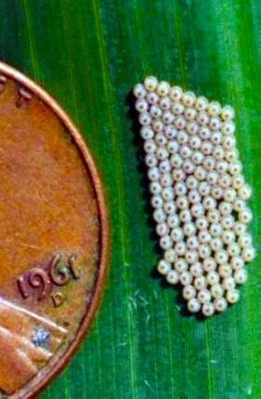
Western bean cutworm larvae are emerging now. A few egg masses were found in fields this last week while scouting for tar spot. Western bean cutworm females often like to lay eggs in fields that are pre-tassel at the time they are mating. Scout the underside of corn leaves in the upper plant canopy. Egg masses will begin to take a purple cast shortly before they hatch. The treatment threshold is reached for western bean cutworm if egg masses are on 5% of plants on non-Viptera corn hybrids.
To scout, check 20 plants in each of five locations in the field for a total of 100 plants. There often is an extended period of moth flight, so determining when a threshold is reached should be when cumulative numbers exceed the threshold.
Egg masses will begin to take a purple cast shortly before they hatch. The young larvae move up to the tassel and feed on pollen packets. They then move down to the ears to enter the ear tips or enter the side of the ear through the husks.
Corn tar spot
MSU plant pathologist Martin Chilvers reported today on the MSU Extension Field Crops Virtual Breakfast that tar spot has been confirmed in Van Buren, Gratiot, Saginaw and Shiawassee counties as of July 20. Begin scouting for the disease, especially on irrigated fields. Look for raised, dark brownish to black spots on corn leaves. In 2019, we were often able to find tar spot on field edges and along the edges of irrigation lanes. Be aware there are also plants that have dark spots on leaves that turn out to be insect poop. Try to wipe off the leaf surfaces with water and see if it comes off. Also, tar spot lesions will become visible on both the upper and lower leaf surfaces.
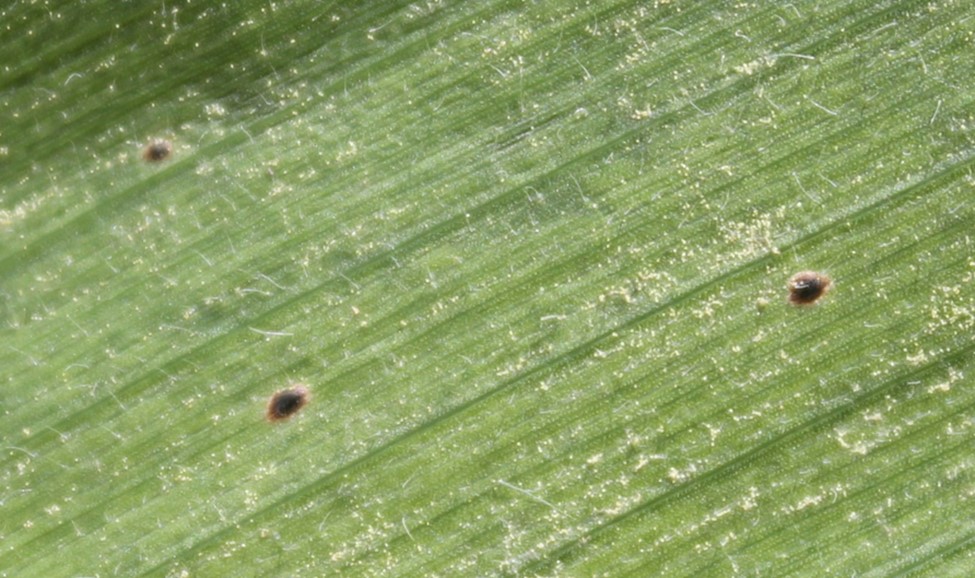
If you do have tar spot in your fields, the weather conditions will likely play an important role in how fast the disease will spread. Extended periods of leaf wetness can play an important role in spreading the disease. Irrigation can also contribute to the development of the disease by extending the number of hours the leaves remain wet. Timing of fungicide applications will only provide protection of the plant canopy for a limited period of time, so deciding when to make an application is important.



 Print
Print Email
Email